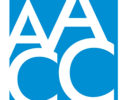The rise of the makerspace
By AACC 21st Century Center Staff
September 6, 2018
Community colleges are investing in makerspaces to grow innovation, entrepreneurship and collaboration.
Innovation and creativity need spaces in which to grow and be nurtured. Safe spaces. That’s why so many community colleges are designing makerspaces. They aren’t new, but they are on the rise.
In California, building makerspaces on campuses is a statewide effort. The CCC Maker initiative, funded by the California Community College Chancellor’s Office, Workforce and Economic Division, is aimed at fostering a maker culture and entrepreneurship while fueling job creation and strengthening regional economies. Community collaboration and industry partnerships are a big part of the makerspace model, and students will have opportunities for internships.
“Makerspace community members collaborate and teach other, enabling students, faculty and business owners to interact in ways not possible in the classroom, enriching students’ education,” said Carol Pepper-Kittredge, CCC Maker Statewide Project Manager, in a press release. “Faculty members are discovering how making, entrepreneurship and projects for social good can be incorporated into their teaching. Students benefit from freely exploring their interests while learning to use laser cutters, art supplies, electronics labs, sewing machines, milling machines and many other creative tools.”
As one of 24 CCC Maker colleges, Orange Coast College (OCC) developed MAKERSPXCE, which focuses on curriculum innovation, community of practice, and student success through internships and entrepreneurship. OCC is relocating its architecture technology makerspace — its anchor program — into a 250-percent larger space (4,500 sf). Resources and equipment on campus are being pooled among interested departments to support the makerspace. non-traditional curriculum and a badging system are being to increase students’ qualifications for internships and jobs.
Mt. San Jacinto’s Eagle Makerspace currently occupies one room, but the possibilities are large. The makerspace gives students, staff and faculty access to 3D printers, a laser cutter/engraver, laser scanner, biotech cell culture lab and common hand tools.
So far, student engagement has been high for the CCC Maker colleges. During the initiative implementation phase from July to December 2017, more than 9,000 students participated in activities in CCC Maker-funded makerspaces.
The California Community Colleges have developed a step-by-step Makerspace Startup Guide to building makerspaces on campus, from initial planning stages to facility design, pilot programs and community outreach.
But makerspaces aren’t just popular in California. At Maryland’s Frederick Community College, the Monroe Center Makerspace provides a fully-equipped lab with new technology, equipment and specialized tools to encourage collaboration and invention. Workshops are held on computing, printing and prototyping, robotics and more. And Edmonds Community College in Washington has THE FACILITY, a makerspace open to the public. People can book time to use the space and equipment and pay as they go.
At Three Rivers Community College, a pop-up makerspace is less about job creation and more about…well, making. The makerspace, located in the college’s gallery, holds 50 pounds of white Legos, 2,000 KEVA planks and a visual arts station for innovation. According to the college, “The intent of the makerspace is to promote active learning, team building, and multidisciplinary approaches to inquiry and creating.”
The pop-up makerspace will be around for the month of September and, during that time, faculty can hold classes in the space and use the materials to provide students with a hands-on learning experience. An engineering professor will host a two-week LEGO contest in the space. A public speaking class will have students participate in a mock “Shark Tank.” They’ll collaborate in small groups to create a prototype item and then will pitch their ideas as a form of persuasive speech.
The pop-up makerspace was funded by the Three Rivers Foundation.
Does your college have a makerspace? Talk about it at LinkedIn.



